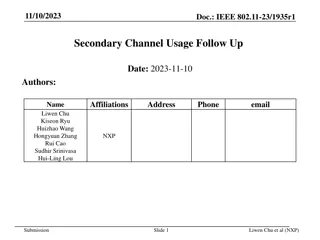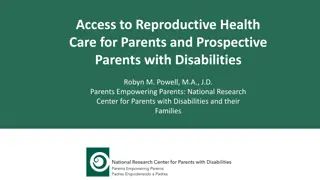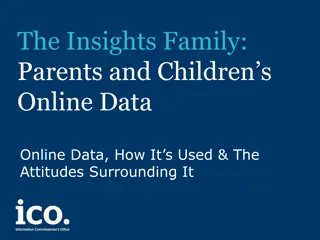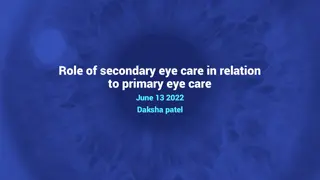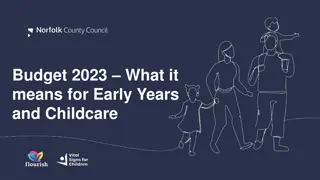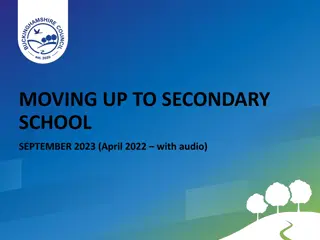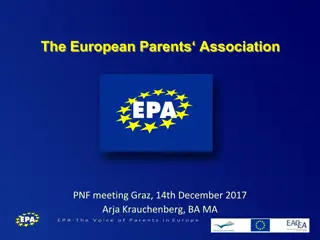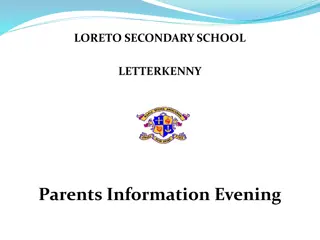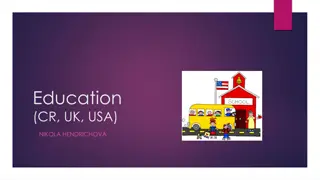
Bullying and Harassment Policies in Brevard Public Schools
Explore Brevard Public Schools' policies on bullying and harassment, in compliance with the Florida State Statute 1006.147. Learn to differentiate between bullying and normal conflict, understand the definition of bullying, and grasp the importance of maintaining a safe educational environment free from such behaviors.
Download Presentation

Please find below an Image/Link to download the presentation.
The content on the website is provided AS IS for your information and personal use only. It may not be sold, licensed, or shared on other websites without obtaining consent from the author. If you encounter any issues during the download, it is possible that the publisher has removed the file from their server.
You are allowed to download the files provided on this website for personal or commercial use, subject to the condition that they are used lawfully. All files are the property of their respective owners.
The content on the website is provided AS IS for your information and personal use only. It may not be sold, licensed, or shared on other websites without obtaining consent from the author.
E N D
Presentation Transcript
SECONDARY PARENT INFORMATION: Brevard Public Schools Bullying/Harassment Policy 1
Florida State Statute 1006.147 Also called The Jeffrey Johnston Stand Up for all Students Act Prohibits bullying or harassment to any student, school employee, volunteer, parent and/or school visitor. 3
Brevard Public Schools Bully/Harassment Policy Our Board is committed to a safe, secure, positive, productive, and nurturing educational environment that is free from bullying or harassment of any kind for all of its students, employees, volunteers, parents and/or school visitors. 4
Is It Bullying or Normal Conflict? The word bullying is overused to describe many situations, so we must first determine if the problem is bullying.
What is Normal Conflict? Conflict happens every now and then and are accidental or unplanned. Behaviors are not attention-seeking or about power and control. 6
What is Bullying? Harm occurs as the result of an intentional act, rather than the result of an accident. A power imbalance exists between the target and the bully. (Real or imagined by the target) The bully enjoys carrying out the action. The bully repeats the behavior, often (if given a chance), in a systematic way. The target is hurt physically or psychologically and has a sense of being persecuted or oppressed. -Source Olweus 7
Florida State Statute Definition of Bullying Bullying means systematically and chronically inflicting physical hurt or psychological distress on one or more students or employees. It is further defined as unwanted repeated written, verbal, or physical behavior, including any threatening, insulting, 8
Definition of Bullying continued or dehumanizing gesture, by an adult or a student, that is severe or pervasive enough to create an intimidating, hostile, or offensive educational environment; to cause discomfort or humiliation; or unreasonably interfere with the individual s school performance or participation. 9
Bullying may involve, but not limited to: Sexual, religious, or racial/ethnic harassment Damaging or destruction of property Placing a student in reasonable fear of harm to his/her person or property Cyber-bullying Cyber-stalking (Unwanted) teasing Social exclusion Threats Intimidation Stalking Physical violence Theft Public humiliation 10
Characteristics of Bullying/Harassment Repeated (Note : A severe one time incident may still meet the definition of bullying) Imbalance of Power Purposeful 11
What is Harassment? Any threatening, insulting or dehumanizing gesture, use of data or computer software, written, verbal, or physical contact Has the effect of interfering with the student s education and the orderly operation of the school 12
What is Harassment continued Places a student or school employee in reasonable fear of harm to his or her person or damage to his or her property Has the effect of substantially interfering with a student s educational performance, opportunities, or benefits Has the effect of substantially disrupting the orderly operation of a school 13
What is Cyber-bullying? Harassments, insults, threats, name-calling, etc. Provoking fights Gossiping, spreading rumors, etc. Pretending to be someone else
Cyber-bullying also includes: Forwarding private messages or pictures Adding details to someone s profile Setting up fake websites or profiles Bully-boards used to mock or degrade others Ratings or voting competitions
Tools for Cyber-bullying: Profile pages Facebook Sony PlayStation 3 & Xbox Live 360 Fake websites Webcams; video cameras; digital cameras Cell phones; text messages; cell phone photos Instant message; email Online games Chat rooms; blogs PlayStation
*NEW* Addition Regarding Cyber-bullying No matter where or what computer is used, when a student uses it to bully/harass a student and/or school based adult, if reported, disciplinary sanctions must be taken by the school administrator. 17
Definition of Teen Dating Violence and Abuse A pattern of emotional, verbal, sexual, or physical abuse is used by one person in a current or past intimate relationship to exert power and control over another when one or both of the partners is a teenager. Abuse may include insults, coercion, social sabotage, sexual harassment, threats and/or acts of physical or sexual abuse. The abusive partner uses this pattern of violent and coercive behavior to gain power and maintain control over the dating partner. 18
Warning Signs of a Teen Involved in Dating Violence or Abuse Withdrawn Secretive/Isolated Spending all time with partner Unexplained injuries Alcohol/drug abuse Making excuses Uncontrolled anger 19
What To Tell Your Teen To Do if He/She is Being Bullied/Harassed or Abused Tell the offender to stop. Walk away. Seek help from a trusted adult. Report immediately! 20
How To Respond To Your Teen About a Conflict/Bullying Respond calmly if they report a conflict. Help them calm down and question them to find out if it is a conflict or has increased to bullying. If it is teen dating violence, report to law enforcement immediately.
When Your Child Reports To You Tell them you are glad they came to you and get the details of the incident. What happened first? What happened next? Who else was there? What did they do? Where did it happen? When did it happen?
Your Childs Report Continued If you think bullying has occurred, complete a parent or have your teen complete the student reporting form found on the BPS website parent portal. http://www.brevard.k12.fl.us/portals/paren ts/pdf/ParentsBullying.pdf Whether the situation is or is not bullying, the critical issue is to resolve the problem and empower your teen. 23
How to Approach the School Call the school and make an appointment with the appropriate person. Remain Calm. Have as many facts as possible and a completed bully report form, if appropriate.
School Response to Bullying Once the parent s/student s reporting form has been submitted, school staff have 15 school days to complete the investigation. Schools will address the issue of safety with you and your child.
Anti-Bully Strategies Help develop talents and positive attributes in your child. Encourage your child to make contact with friendly students. Help your child put the conflict in perspective and not take it personally. Teach your child safety strategies. Nurture a positive self view.
Teach Your Child How To Be a Positive Bystander Show disapproval Show empathy Stand up and speak out Help solve the conflict Get adult help Call the victim over
How Students Report Verbal: In-person reporting Written: BPS Bullying/Harassment/Teen Dating Violence and Abuse Reporting Form - Secondary/Adult located on the Brevard Public Schools Website Parent Portal Anonymous: Bully Box, Speak Out Hotline (1.800.226.7733), school-based website if applicable 28
Incident Reporting and Immunity GOOD FAITH Anyone making a report in good faith is immune from cause of action/damages. It will NOT affect employment, grades, learning/working environment or assignments. False Reportingwill result in consequences, and appropriate remedial action will apply. 29
Actions Taken for Students Who Violate the Bully Policy Counseling Safety Plan Stay Away Plan Letters / phone calls to parents of both the offender and the victim Suspension Expulsion Reported to law enforcement 30
Support Available for Students Who are Targets of Bullying Counseling Safety Plan Social Skills Training
Consequences for Parents, Visitors/Volunteers Who Violate the Bully Policy Determined by the school administrator Trespassed If applicable, reported to appropriate law enforcement agency 32
Ways Parents of Secondary Students Can Help Remain proactive and reinforce respectful behavior. Let them know that bullying/harassment and teen dating violence and abuse is disrespectful, unacceptable, and can be dangerous. Tell them hazing is illegal, humiliating, and can be life threatening. Tell them sexual harassment is illegal. 33
More Information to Tell Your Teen Misbehavior on the basis of race, ethnicity, religion, disability or sexual orientation is a form of bias or hate and cannot be dismissed as teasing. Hate-motivated behavior often leads to hate crimes and are punishable by law. 34
How Can Parents of Secondary Students Prevent Bullying? Model speaking and acting in respectful ways to solve problems. Discuss bullying behaviors and how hurtful it can be. Make behavioral expectations clear and consistent when siblings/peers engage in hurtful teasing and bullying. Help teens understand the meaning of friendship. Urge teens to report bullying. 35
Talk To Your Teen About Being with Friends and Knowing Which Friends They Can Count On Encourage your teen to develop healthy relationships and to not hang out with other teens who make them feel badly about themselves. 36
We Encourage All Parents To: Know the school rules, expected behaviors and consequences of bullying/harassment/teen dating violence and abuse. Participate at school, offer services and attend school- sponsored activities. Communicate regularly with teachers. Report bullying/harassment/teen dating violence and abuse behavior immediately. Ask for and accept the school s help whether your youth is a target, an offender, or a bystander. 37
Remember You Are Your Teen s Most Important Teacher



